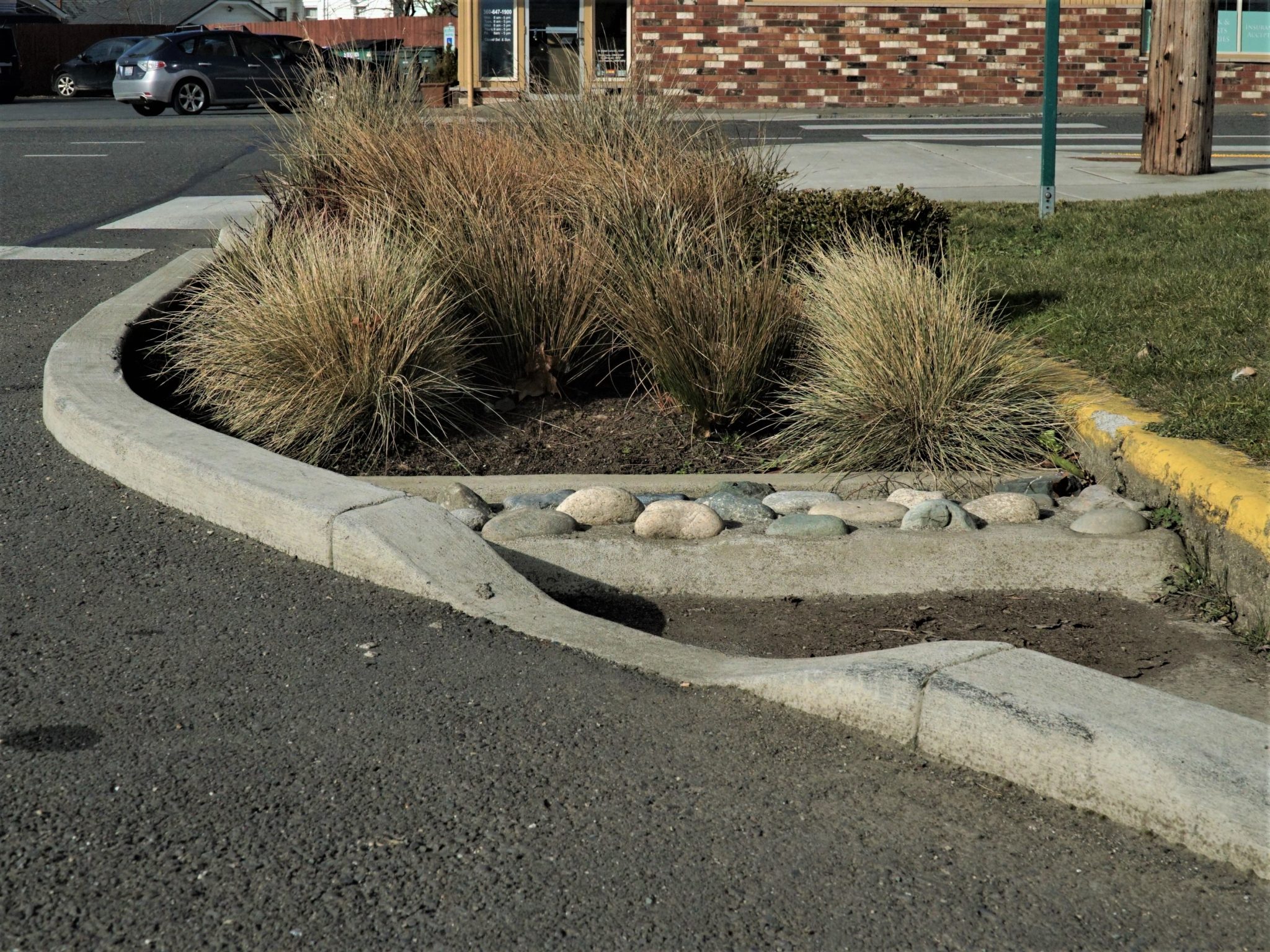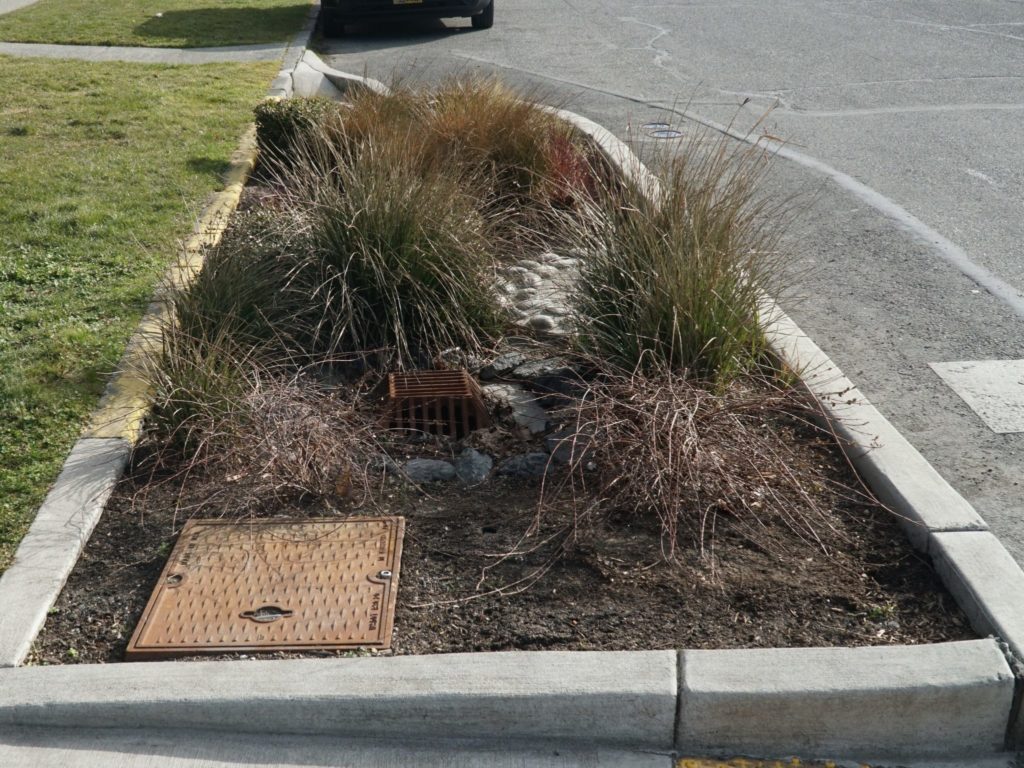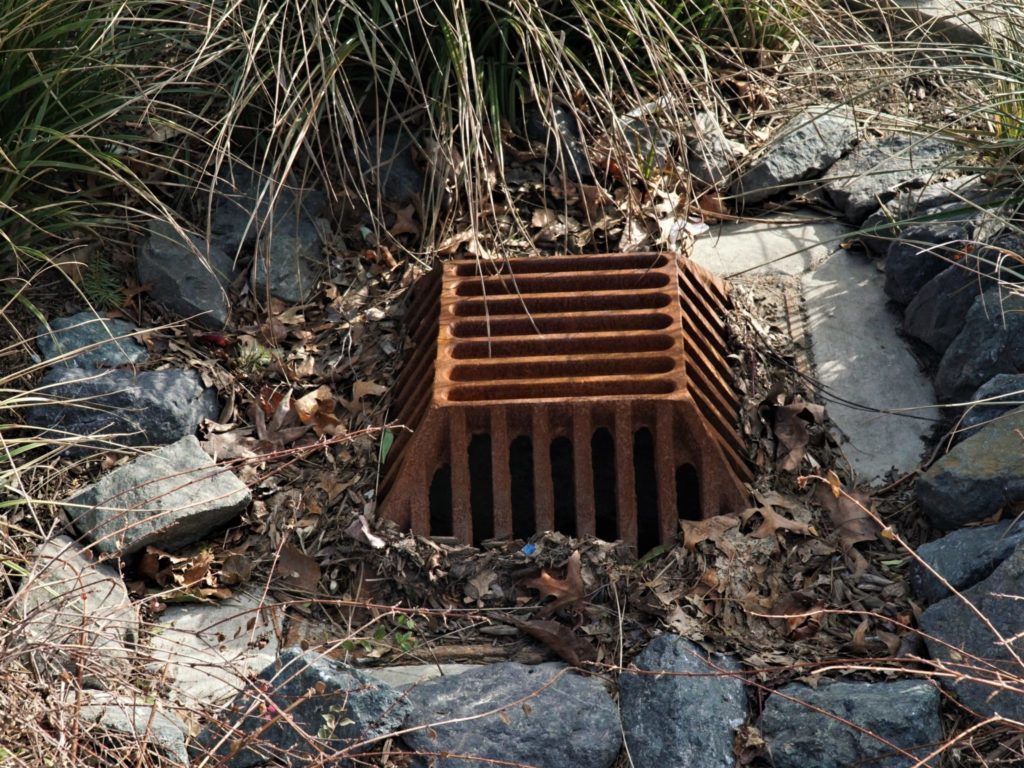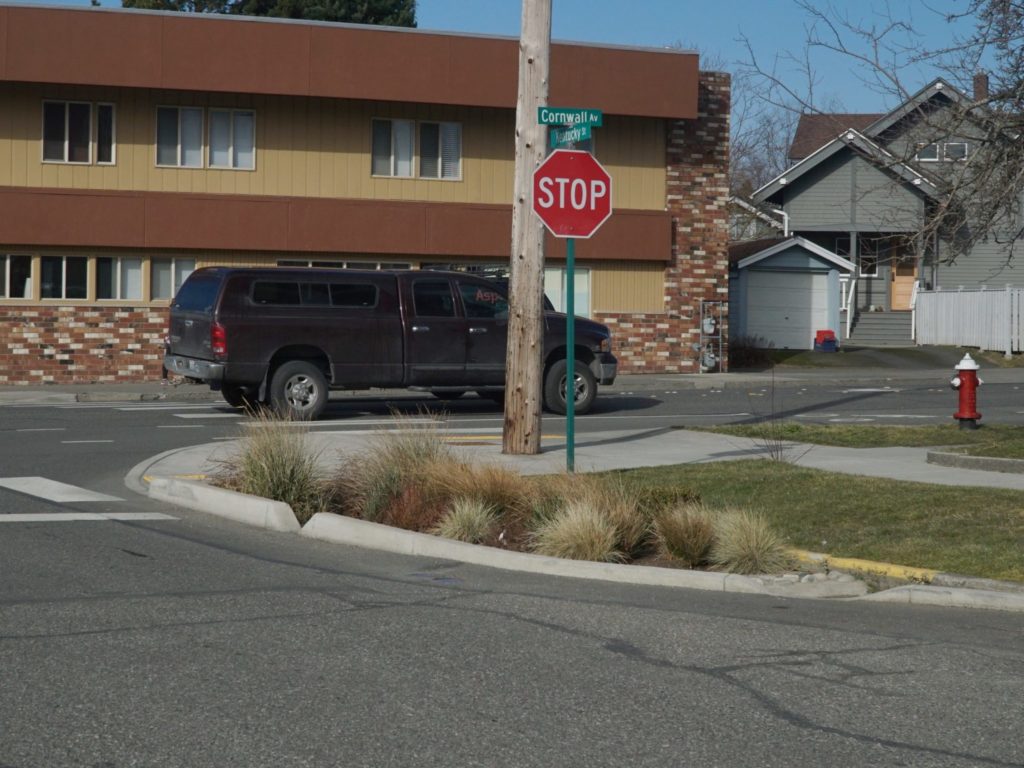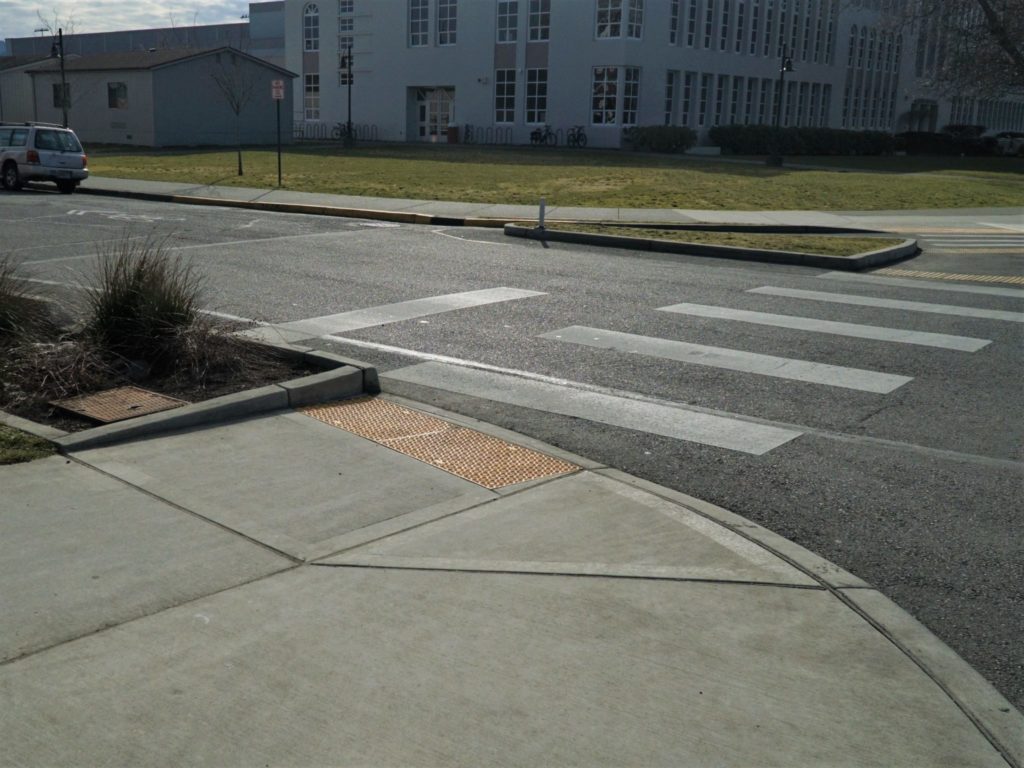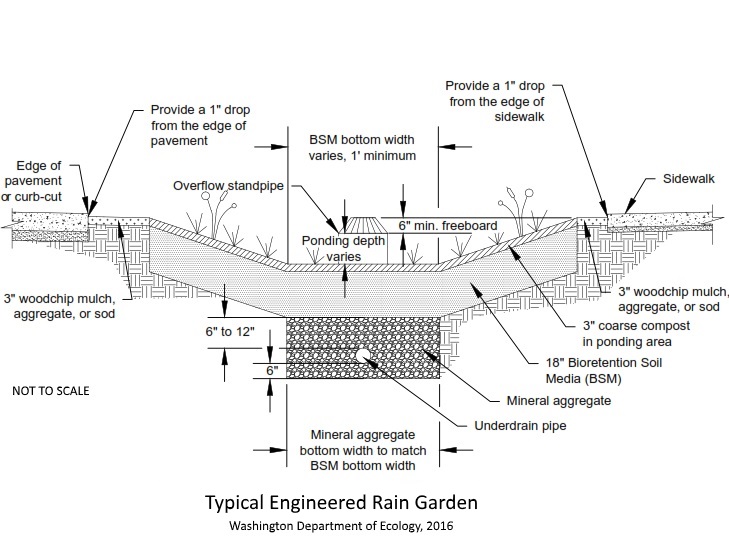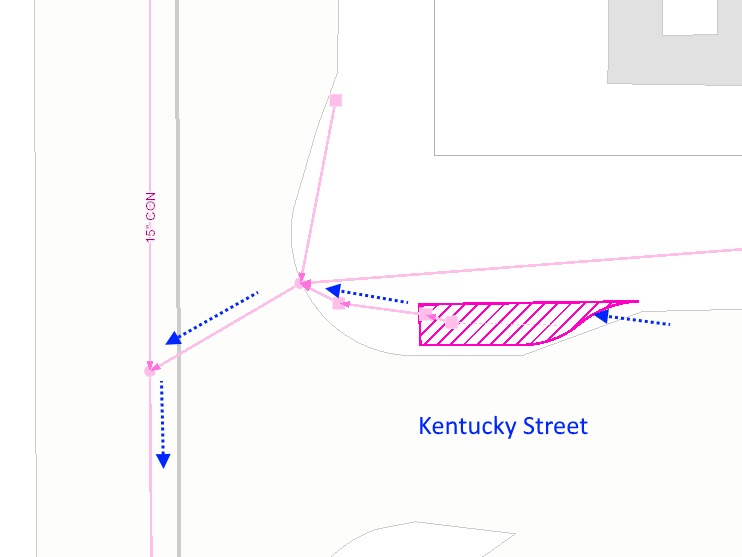Where is this located? It’s at the corner of Kentucky Street and Cornwall Avenue next to Assumption Church.
What’s special about this place? Runoff flows into the first bay capturing sediment for easy clean out by maintenance crews. Runoff flows over the rocks called energy dissipators. Then it enters the rain garden planted with reeds and sedges that soak up the runoff. The concrete curbs keep the stormwater from flowing out onto the street. The rain garden connects to under-drains which take the treated stormwater away and eventually to the bay.
image gallery
select any photo to see a slideshow
